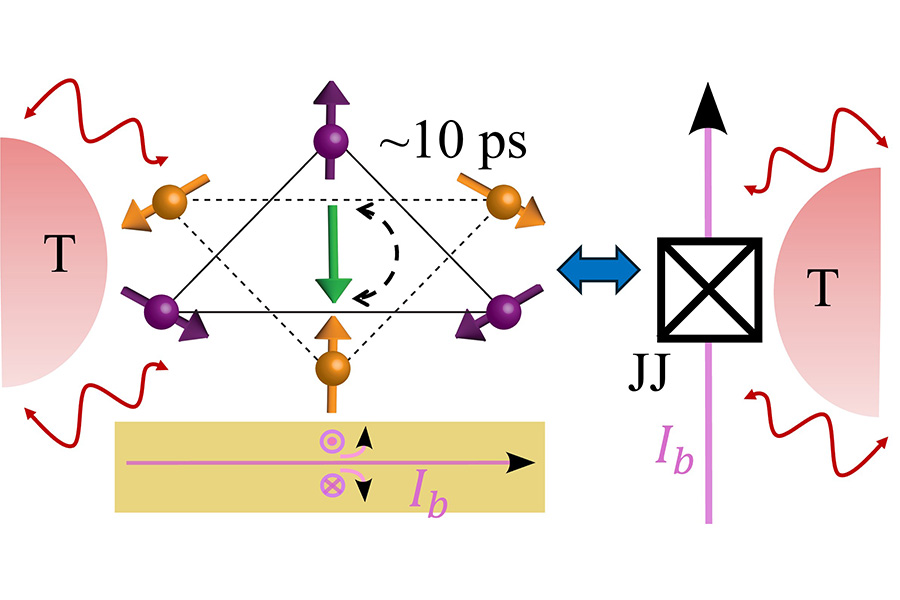Purdue ECE paper on ultra-fast dynamics in unconventional magnets is highlighted by Physical Review Letters

Purdue University researcher Shiva Konakanchi is the lead author of a breakthrough study published in the reputed Physical Review Letters that explores new possibilities for ultra-fast computing. The paper was also recognized as an “Editors’ Suggestion,” a distinction given to only about one in six accepted manuscripts for its importance, innovation and broad appeal.
Konakanchi, a postdoctoral research associate in the Elmore Family School of Electrical and Computer Engineering, worked with his advisor, Pramey Upadhyaya, associate professor of electrical and computer engineering. Their paper, “Electrically Tunable Picosecond-Scale Octupole Fluctuations in Chiral Antiferromagnets,” was co-authored with collaborators from Purdue and Tohoku University in Japan.
Chiral antiferromagnets combine the best of both worlds: efficient electrical readout (a hallmark of ferromagnets) with negligible stray fields and ultrafast spin dynamics (the hallmarks of antiferromagnets). In a normal ferromagnet like a bar magnet or a compass needle, all the atomic spins align to produce a single dipole moment (north and south poles). An antiferromagnet, by contrast, has its spins alternating between pointing up and pointing down, yielding no net dipole moment. A chiral antiferromagnet adds a twist: its spins form a non-collinear pattern – imagine three spins at the vertices of a triangle rotated 120° with respect to each other. Despite negligible net magnetization, this non-collinear pattern does influence electrons flowing through the material owing to the so-called broken crystal and spin-polarization symmetries.
One way to describe the magnetic order in chiral antiferromagnets is through an octupole moment. This technical term refers to a complex eight-pole-like magnetic arrangement arising from clusters of the triangular spins. It can be thought of as the chiral antiferromagnet’s internal compass: an arrow (the octupole) that represents the collective orientation of its complex spin clusters. Previous works have established that unlike traditional antiferromagnets, chiral antiferromagnets exhibit electrical signatures similar to ferromagnets corresponding to the orientation of their octupole moment.
The Purdue-Tohoku team has shown that the octupole moment in chiral antiferromagnets relaxes on timescales as low as a trillionth of a second, highlighting their potential as the ultrafast building blocks of spintronic devices. The ability to relax on picosecond timescales is particularly useful in probabilistic computing, a faster computing paradigm that requires rapid generation of random numbers to solve complex computing problems. Furthermore, by drawing an analogy between seemingly disparate areas of physics such as chiral antiferromagnets and Josephson junctions (a device used in superconducting quantum computers), the team proposed a novel approach to electrically tune the octupole relaxation timescales in chiral antiferromagnets with spin currents.
“Understanding how octupole order relaxes is key to designing information processing devices that can leverage the special properties of chiral antiferromagnets. The ability to electrically tune the octupole relaxation times provides a powerful new handle over the material’s magnetic dynamics.” Konakanchi said.
The recognition by Physical Review Letters means the paper is expected to draw wide attention in the physics and engineering communities. The work could help lay the foundation for next-generation spintronic devices based on octupole order.
The research received support from the National Science Foundation and multiple Japanese science agencies.
The full paper can be read online: Phys. Rev. Lett. 135, 136704 (2025).
